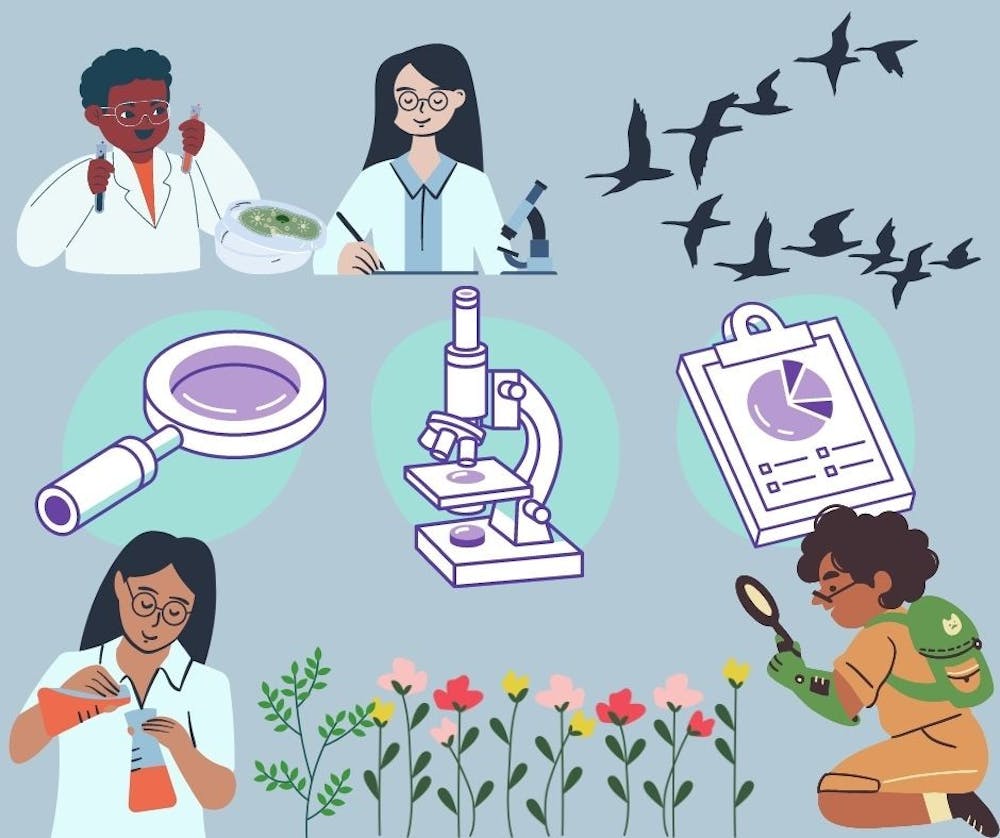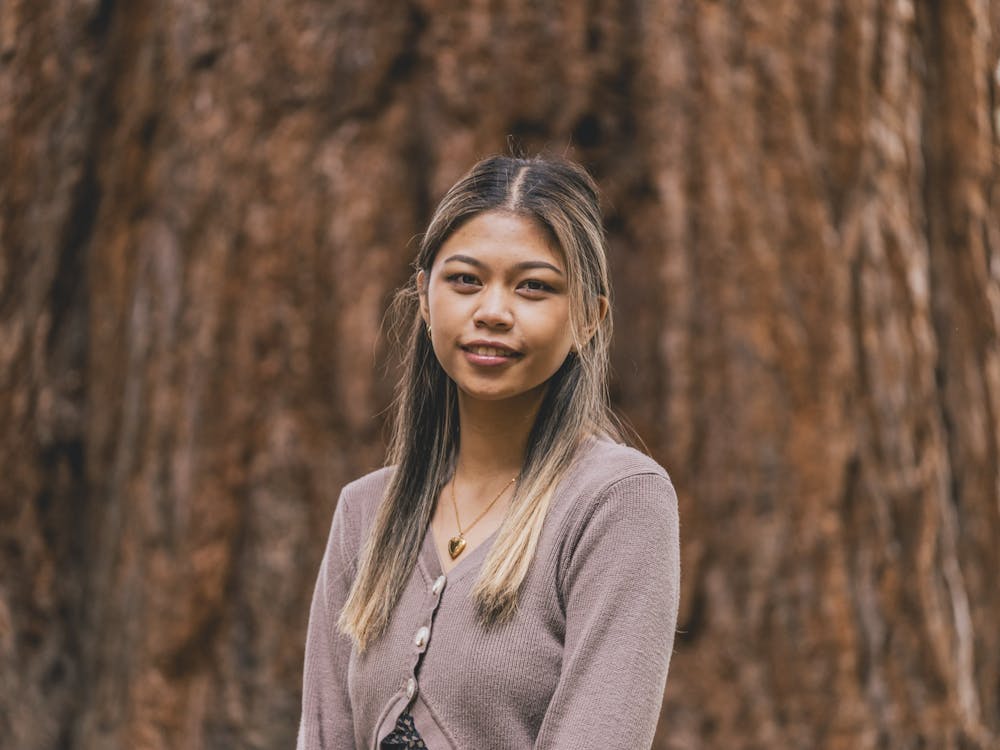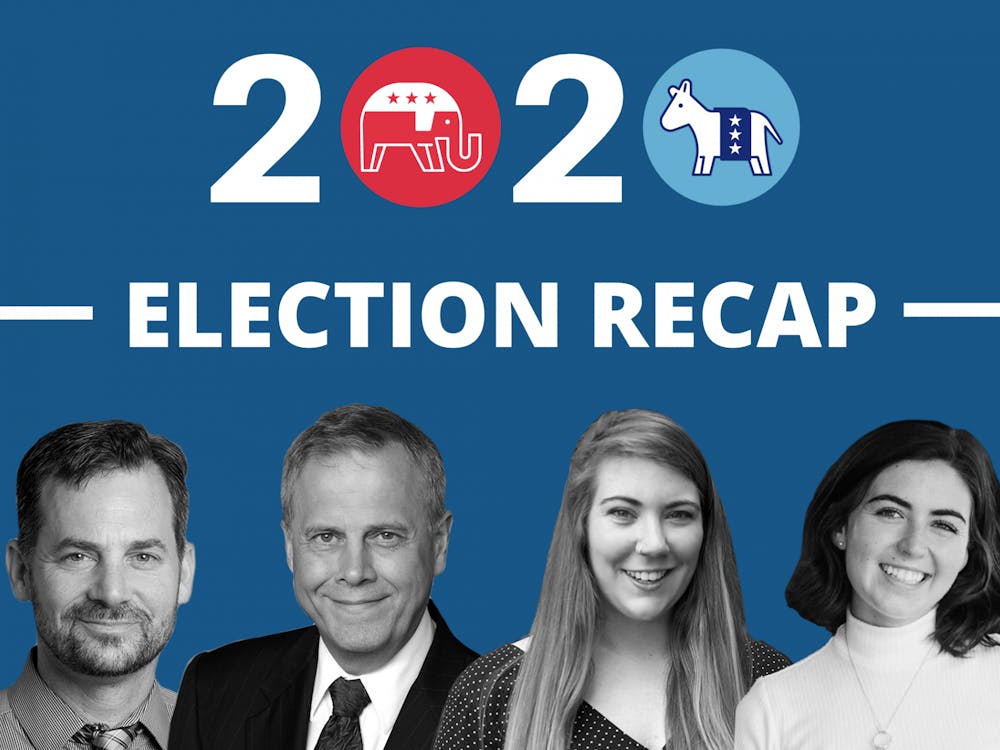Every summer, students participate in niche research projects guided by professors. This past summer was no different, although some work was done remotely. Some of these research projects may even be published in scientific journals. Here's a glimpse into some of the hard work students and professors have put in.
Bacteriology Research
If you have ever eaten raw or undercooked seafood, primarily oysters or shellfish, and felt the unfortunate effects of food poisoning, chances are you had the disease Vibriosis.
Vibriosis is estimated to cause about 80,000 illnesses in the U.S. each year, according to the CDC. Most cases caused by the bacteria, Vibrio, are mild and the majority are caused by the most common species Vibrio parahaemolyticus. However, the species Vibrio vulnificus is lethal and can cause severe infections when an open wound meets saltwater or brackish waters, leading one in five people to die.
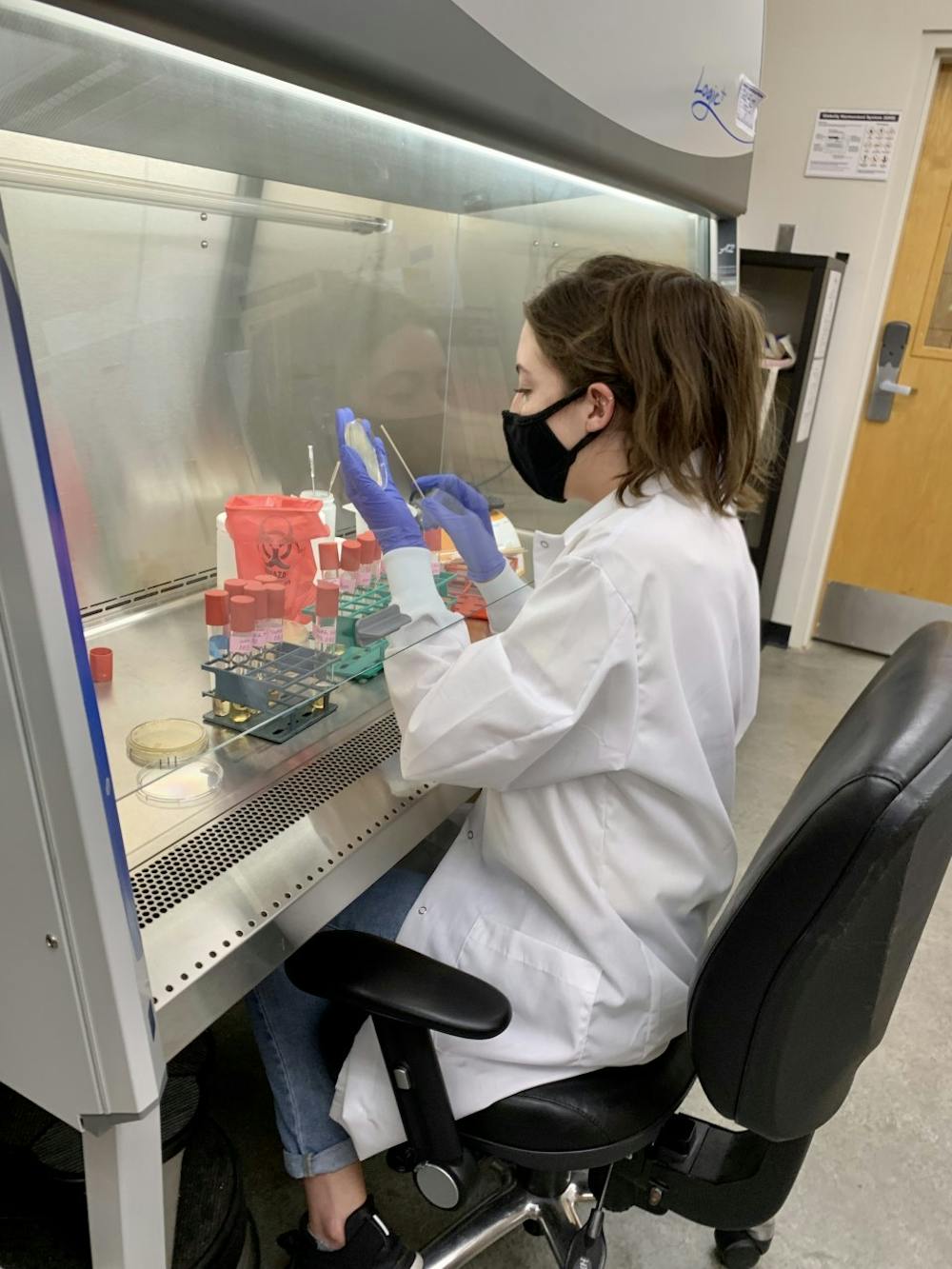
Senior Zoe Kellermeyer doing bacteriology research.
Photo courtesy of Zoe Kellermeyer.
We happen to have experts on this bacteria on our campus. Students Zoe Kellermeyer ‘22, Abe Ahn ‘21 and Jade Thomas ‘23 spent all summer researching this bacterium with biology professor Ryan Kenton. Their research focused on the TonB2 system of proteins that is located within this bacterium, and how the bacterium’s uptake of iron from its environment through its transport system relates to Vibriosis.
They worked on four to five projects simultaneously. Tasks included isolating the individual proteins in the TonB2 system to figure out how they function, what the purpose of these proteins are and deleting a protein from the system to see what affects it had on the bacteria’s ability to take up iron.
“T-streaking, which is basically a method of moving one bacteria colony onto a new plate to grow more colonies of the same bacteria, was one of my favorite parts of the research,” Kellermeyer said. “When you get in the zone it’s just so calming.”
To do this, they use a small wooden stick to pick up one colony, transfer it to a new plate, and then place it in an incubator so that the colony will grow.
“I’m still kind of dumbfounded by the research we did and still processing it all. It was just such an amazing experience,” Kellermeyer said. “I learned that I really like the micro level side of research. I’m perfectly happy being in the lab.”
These students’ findings have the potential to have important clinical ramifications down the line of research. Until then, make sure to cook your seafood thoroughly and cover all wounds with a bandage if heading into salt water or brackish waters.
Purple Martin Research
You are meandering through campus and suddenly hear a bird chirping. Odds are, you may have heard the Purple Martin bird call. These beautiful, glossy, dark purplish-blue colored birds are the largest swallows in North America. They migrate North from Mexico and South America each year for breeding, many nesting in man-made structures known as gourds.
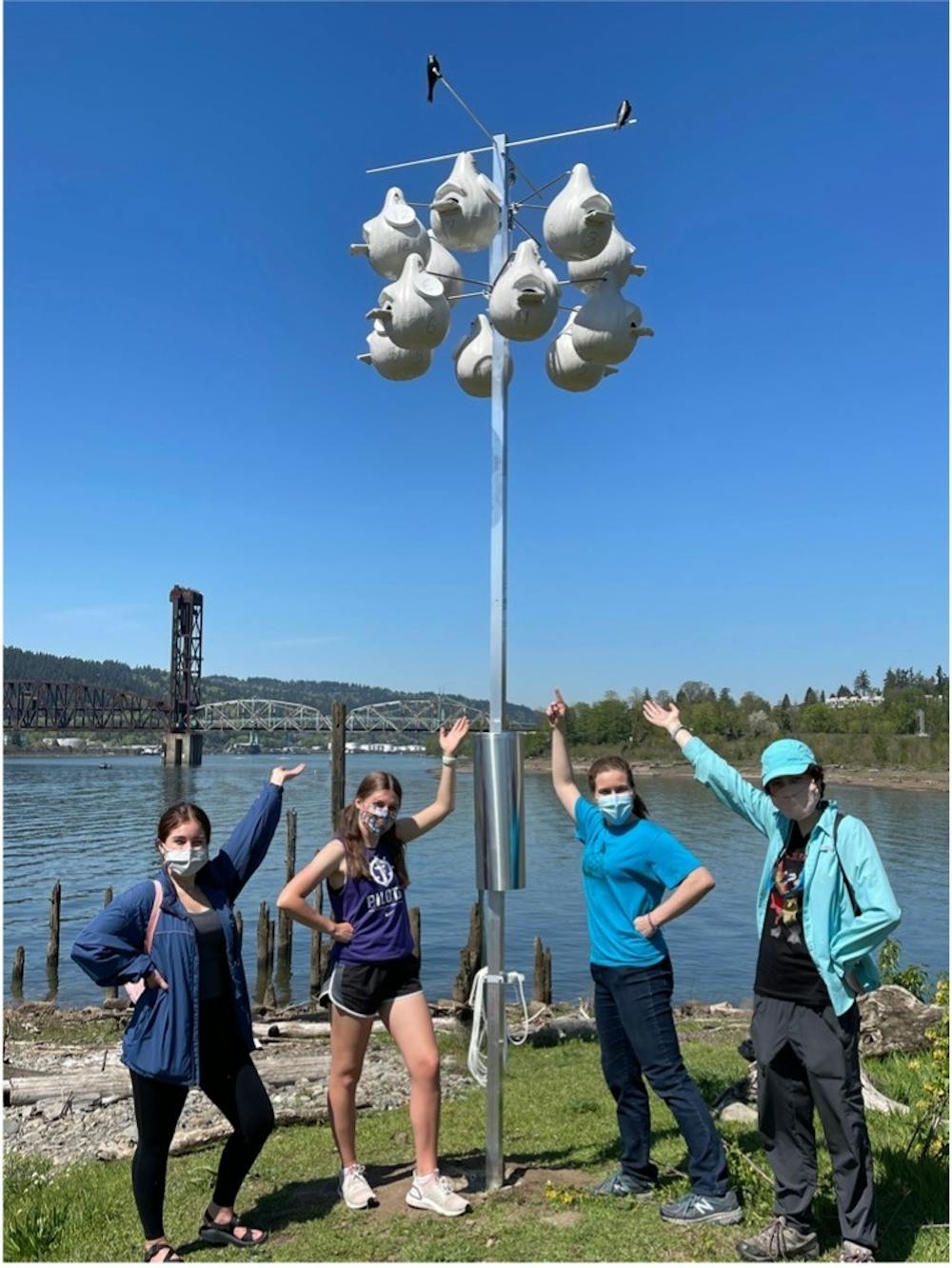
Junior Star Garrigues, junior Kaylan Tate, sophomore Kayla Durand, and junior Samantha Davis pointing at a gourd array for their purple martin research.
Photo courtesy of Kaylan Tate.
Every morning during the summer around 6 a.m., Kaylan Tate ‘23, Star Garrigues ‘23, Samantha Davis ‘23, Kayla Durand ’24 and often a few volunteers, were wide awake observing the Purple Martins on UP’s River Campus with biology professor Katie O’Reilly.
Binoculars and notebooks in hand, they observed the incubation behaviors and patterns of these birds. They set up gourd arrays, which are plastic nesting sites attached to poles, from which they observed them.
Each person was assigned to observe three gourds. Recordings included if a bird entered the gourd, any feeding that happened and if a parent Purple Martin dropped a fecal sac out of the gourd. The students would observe for two to three hours each day and then input their data into an excel sheet. With the heatwaves this summer, they draped DIY sun shade cloths over the gourds to ensure the birds survived.
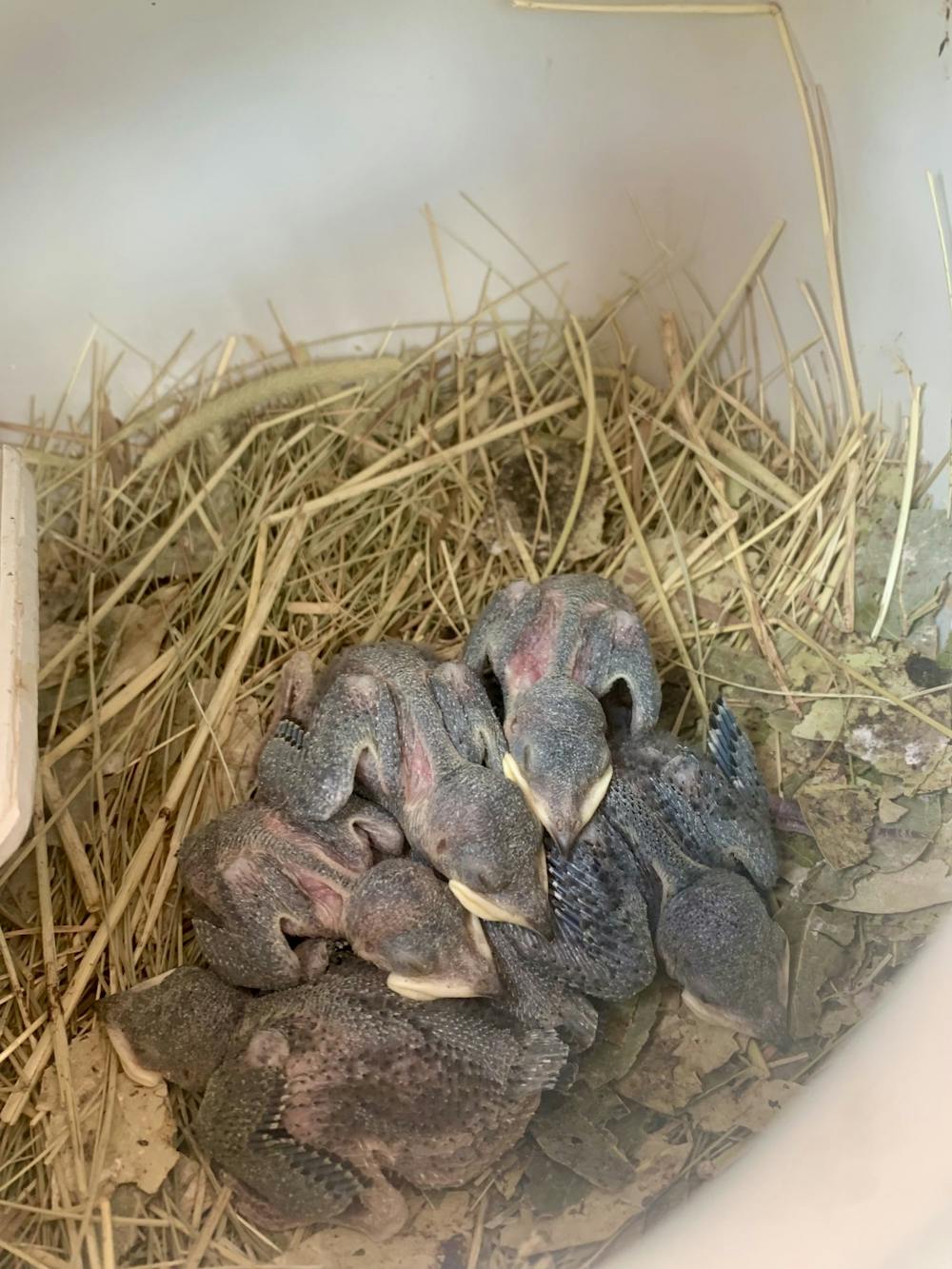
Purple martins from purple martin research.
Photo courtesy of Kaylan Tate.
“Watching birds all summer has personally changed the way that I see the world because I always look around now,” Tate said. “You can learn a lot from watching them and how they interact, you can see that they’re not too different from us humans. This experience has shown me that if you’re interested in something, go for it. I didn’t realize I could be a part of a scientific community and make contributions to research. It was such an amazing experience and I have never felt more sure of my place in academia.”
The Purple Martins used to be common in the Willamette Valley, but their populations have declined dramatically with the effects of climate change. There is not a lot of research being done on Purple Martins, so this project is important in understanding more about this declining species.
“This research has shown me that science is everywhere, and if you just take the time to stop and observe, that is something that can be contributed to scientific research,” Tate said.
Milkweed Growth: Implications for the Monarch Butterfly
With their eye-catching orange and black wings and their incredible migration, the monarch butterfly is a sign of hope and resilience for many. Migrating up to 3,000 miles from the US and Canada down to Central Mexico in the winter, they are an inspirational symbol of immigration rights and a culturally important symbol for many indigenous groups in Mexico.
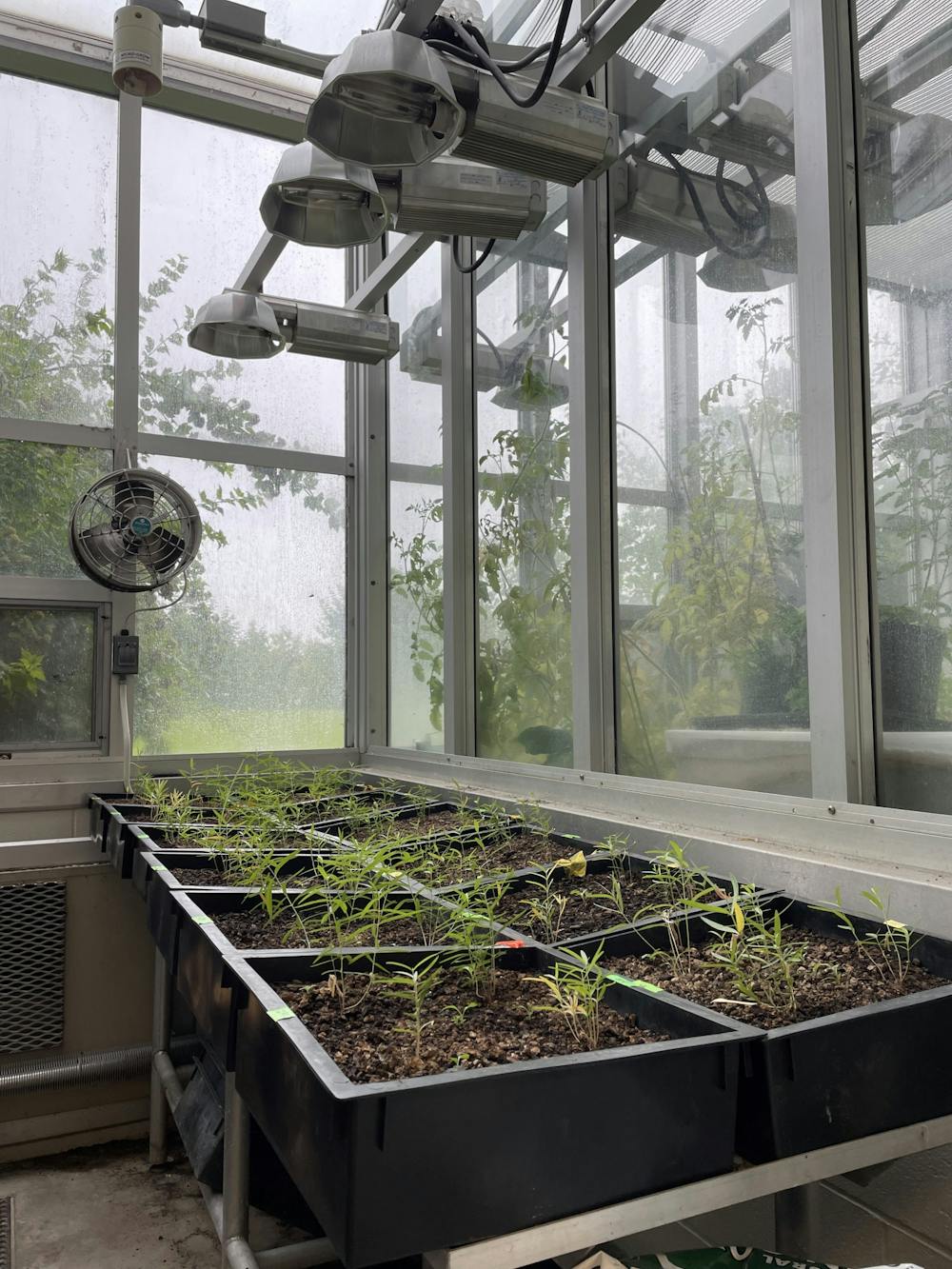
Milkweed grown in the Swindells greenhouse for the milkweed growth research project.
Photo courtesy of Rylee Mattson.
Milkweed is the basis of the monarch’s existence, as the only plant that adult monarchs will lay their eggs on and larvae will feed on. Rylee Mattson ’22, Estrella Silva ’22 and Katherine Klassen ’22 worked with biology professor Laurie Dizney this summer researching how different environments and treatments affect milkweed growth.
They grew milkweed in wooden boxes on River Campus and in the greenhouse in Swindell’s Hall, applying different treatment methods to each. In the greenhouse they treated some milkweed with Roundup, some with Arbuscular Mycorrhizal Fungi (AMF), and some with both, measuring the differences in leaf growth and leaf number. In the outdoor plants, they researched how different percentages of shade and sun and differing biodiversity of surrounding plants affected growth.
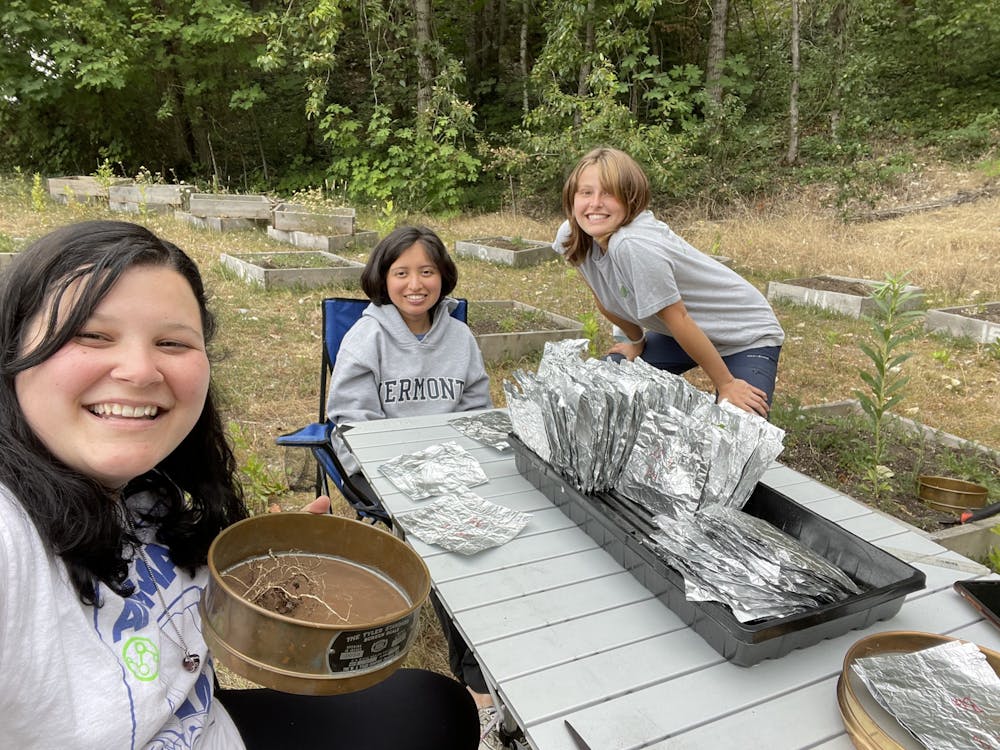
Seniors Rylee Mattson, Estrella Silva and Katherine Klassen researched milkweed growth.
Photo courtesy of Rylee Mattson.
“It was not very glamorous,” Mattson said. “We never really got to interact with the butterflies, but it was rewarding knowing that the research we’re doing is contributing to a really important cause.”
Another part of their research included harvesting the milkweed, drying it and grinding it to measure how much cardenolide toxin, a toxin unique to milkweed, was in the plant. They will be analyzing this data this semester to see how the toxin affects milkweed growth. By the end of spring semester, they hope to have their research paper published.
“Being able to work with members of the UP community especially after being online last year was one of my favorite parts of the research,” Mattson said. “It was fun getting to work really closely with a faculty member and exploring research in general to decide for myself how I feel about it.”
Unfortunately, the monarch population has been declining due to climate change, deforestation and a loss of native plants. Thinking of sprucing up your garden? Consider planting some milkweed to help the monarch population recover.
Modeling COVID-19
It’s spring 2020 and math majors Sierra Nieland ’22 and Chloe Campbell ’22 have been selected to do research on the spread of influenza with mathematics professor Eli Goldwyn for the upcoming summer.
“Then we were sent home for COVID-19, and we thought, since this is happening right now, we might as well find a COVID-19 outbreak that we can try and model,” Nieland said.
Within no time, they found a COVID-19 outbreak that occurred off the coast of China in February 2020 on the Diamond Princess cruise ship with data over a 30-day period. They chose to model a cruise ship outbreak because the population is constant.
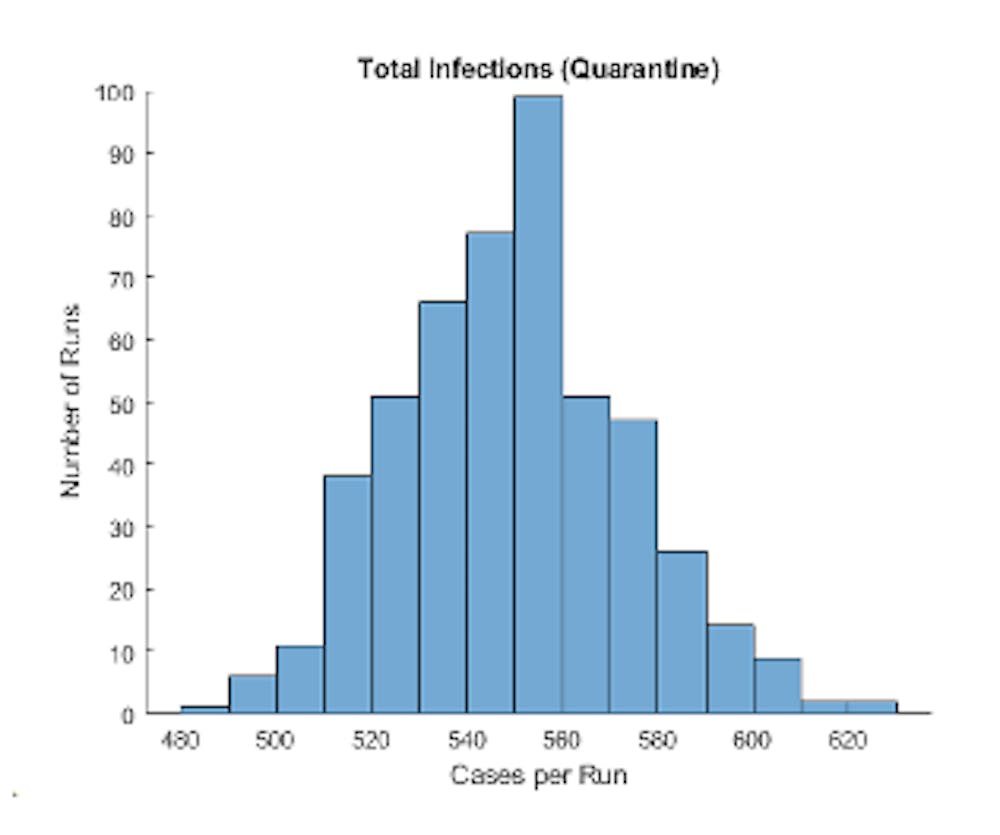
Modeling Covid-19 research that seniors Sierra Nieland and Chloe Campbell created.
Courtesy of Chloe Campbell.
Their goal was to create a model that would match the data of the COVID-19 outbreak on the cruise ship. Using the coding language MATLAB, they ran different simulations to approximate the day-by-day breakdown of cases on the cruise ship and to create graphs and plots to model their data.
Hours were spent each day writing code, inputting the data into their code, and altering the code until they got it right. The models they created, including histograms, box and whisker plots, and line graphs, are a way to structure the COVID-19 cases over the 30-day period.
“I just really enjoyed learning the coding aspect of math research. It’s cool to see that I can actually code in my area of study, and it makes sense to me, which is nice,” Nieland said.
Their research continued into the spring of 2021 where they focused on the impact of quarantining and how it prevents the spread of COVID-19.
“Our conclusion from our research is that quarantining sooner means that you will have less cases in the long run,” Campbell said.
They have selected a biomathematics undergraduate journal to submit their article to and are hoping to get it published.
“If the paper is published and people get a chance to read it, I hope people will understand that there are random variables, and that you might not get COVID-19 today, but for the same amount of exposure you might get it tomorrow,” Campbell said.
Microplastics in Portland Stormwater Runoff and the Effectiveness of Bioretention Cells
From the food we eat to the air we breathe, microplastics are present everywhere. They are impossible to avoid and can have potentially negative effects on human health. Kerigan Bermani ’22 and Elizabeth Diaz-Gunning ’22, along with engineering professors Jordy Wolfand and Cara Poor, spent their summer researching microplastics in Portland stormwater runoff and the effectiveness of bioretention cells as a filtration system and have found strong evidence for some promising solutions.
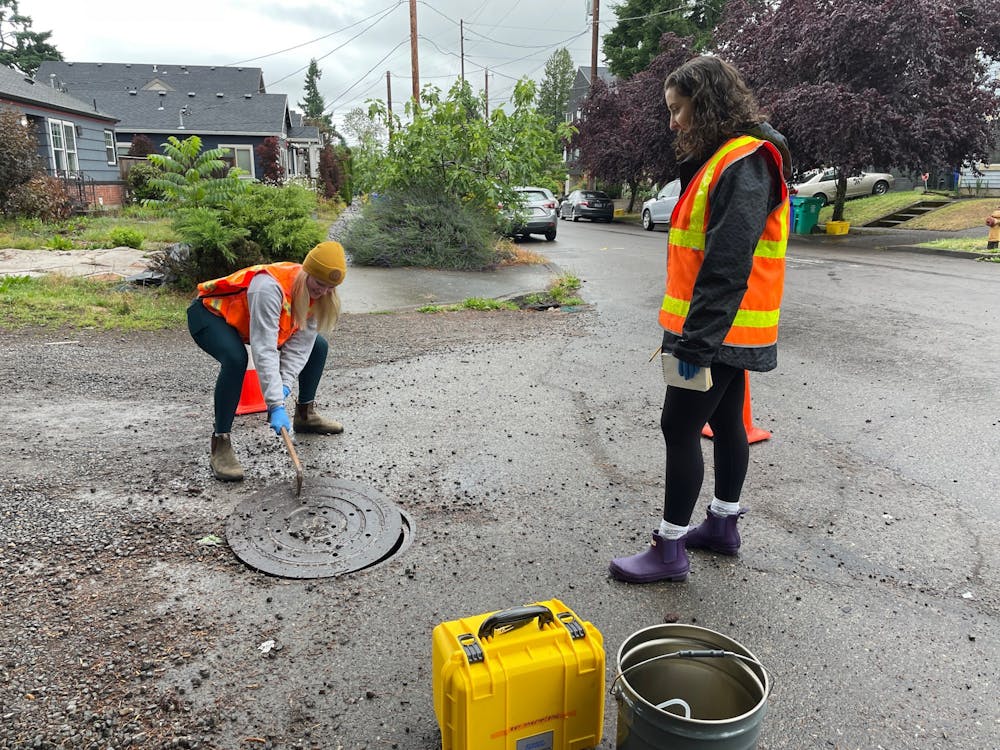
Seniors Kerigan Bermani (left) and Elizabeth Diaz-Gunning (right) doing microplastics in stormwater research.
Photo courtesy of Kerigan Bermani.
The bioretention cells they used for testing were similar to PVC pipes, and packed with different types of soil. They put microplastics into the soil, and then ran filtered stormwater through them. Afterward, they counted the number of microplastics that came out at the bottom to determine how effective the cells were at catching the microplastics and to determine the percentage of removal.
“So, the theory with the bioretention cells is that we could put them in places with high stormwater and/or microplastic concentrations and have these cells catch the stormwater before reaching the drainage system,” Bermani said.

Senior Elizabeth Diaz-Gunning participated in the microplastic storm water research project.
Photo courtesy of Kerigan Bermani.
The data Bermani and Diaz-Gunning have gathered so far has proven that the bioretention cells are effective. Out of the 2,400 microplastics placed into each cell, an average of one to two microplastics came out at the bottom of the cell, so the removal rate was 99.9%.
The city of Portland and UP have already purposefully placed plants and rain gardens in areas with high concentrations of stormwater runoff to catch microplastics. The hope is that, by confirming that bioretention cells work, they will be used more often.
“Microplastics are being found everywhere, from the most remote parts of the ocean to human placenta,” Bermani said. They are important to study because they’re harmful and we don’t really know the long-term health effects of literally having plastic in our systems.”
Sophia Truempi is a reporter for The Beacon. She can be reached at truempi22@up.edu.



